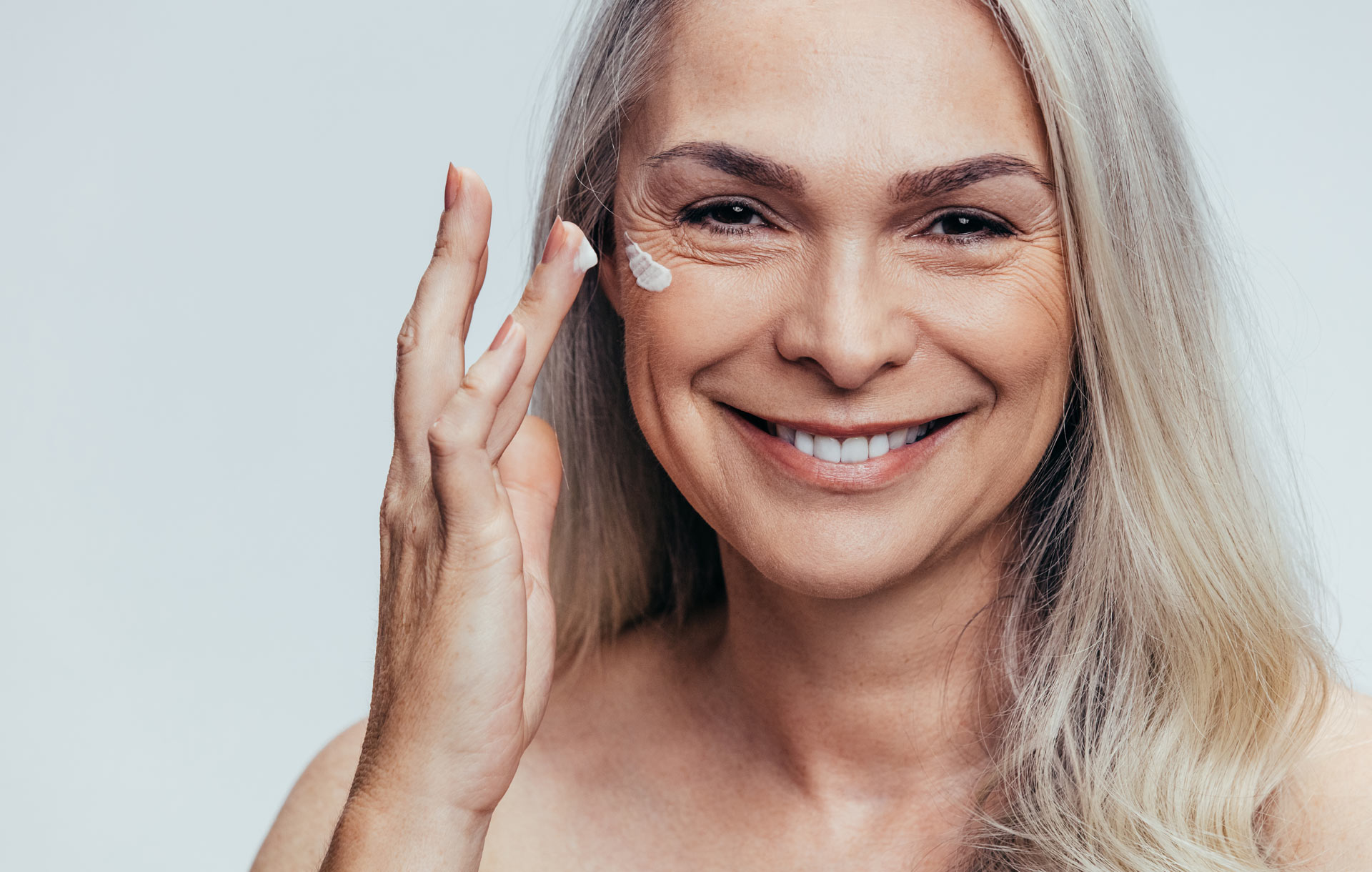
Treatment that goes beyond anti-aging
In a previous article, we learned about menopause and how it affects the skin. Let’s now dive into skincare science and get a better understanding of how to treat the various conditions associated with menopause and how to help our clients age more gracefully.
HORMONAL CHANGES
The transition from perimenopause to menopause can be extremely stressful on the skin and body. As estrogen levels plummet, the skin may change drastically from month to month and will show signs of unbalance. It can be both dry and oily at the same time while exhibiting acne, visible capillaries, larger pores, and increased sensitivity.
It’s common for clients to be frustrated with their skin during this time, but balancing the skin’s pH level, keeping the barrier intact, and getting regular professional treatments will be the most important in mitigating these hormonal negative effects changes.
[ihc-hide-content ihc_mb_type=”show” ihc_mb_who=”2,4,5,6,7″ ihc_mb_template=”3″ ]
MENOPAUSAL ACNE
Acne associated with hormonal changes can be addressed with low-level professional peels and gentle at-home exfoliants. Alpha and beta-hydroxy acids such as lactic, mandelic, and salicylic acids are all shown to be effective. Because the skin will be more prone to dryness and flaking, it’s best to avoid harsh ingredients and medicated cleansers or scrubs, as these can strip the skin barrier and create unnecessary inflammation. OTC retinol formulas and Vitamin A can also be equally effective at treating menopausal acne and reducing aging signs.
DRYNESS & DEHYDRATION
During and after menopause, not only will the epidermis become thinner, losing its ability to retain water, the skin will also produce less of its own NMFs, sebum, and hyaluronic acid. This two-fold effect is best treated with a double approach. The first goal is to increase the amount of available water and NMFs in the skin and the second is to keep as much of it inside as possible. This can be achieved by combining humectants and emollients and sealing them with occlusives.
Humectants such as hyaluronic acid, glycerin, sodium PCA, and urea will bind to water like a magnet and pull moisture inside the cells. On the other hand, emollients, which are oil-soluble ingredients such as oils, esters, lipids, and fatty acids, will help replenish lost sebum and restore the skin barrier. Lastly, occlusive ingredients such as silicones, waxes, lanolin, petrolatum, and squalane will play a key role in preventing trans-epidermal water loss (TEWL) by trapping water and moisture inside the skin layers. Maintaining a healthy lipid barrier will be crucial, and avoiding anything that can potentially strip the skin.
REDNESS & SENSITIVITY
During menopause, increased capillary activity and rosacea symptoms can flare up due to excessive flushing. This may also cause the skin to become more sensitized. The best approach is to reduce inflammation. Cold therapy and LED light therapy during professional treatments and at home can be an excellent choice to help calm, reduce redness, and address inflammation. Some of the best ingredients for inflammation and redness include the Centella Asiatica and Boswelia Serrata plant extracts, along with allantoin, beta-glucan, niacinamide, licorice, and salicylic acid.
SAGGING & LOSS OF FIRMNESS
Addressing loss of firmness due to the breakdown of collagen requires a longterm approach and more preventative measures. Because a woman will lose about 30% of collagen in the first five years of menopause, early intervention is key. Treatments that can help stimulate and support healthy collagen include micro-current, radio-frequency, micro-needling, LED light therapy, and laser treatments. In addition, topicals containing AHAs, retinol, peptides, vitamin c, and antioxidants are proven antiaging ingredients that can really slow down the aging process and strengthen the skin when used consistently and for many years.
HEALTH & LIFESTYLE
Lastly, clients going through menopause should explore different treatment options with their physician. Hormone replacement therapy, as well as oral medications, can help ease uncomfortable symptoms and make menopause easier for some women.
Also, lifestyle changes should include daily movement, drinking plenty of water, getting enough Vitamin D, and eating a nutrient-dense diet of plants, proteins, omega-3s, and antioxidants. Some women choose to supplement with omega-3, biotin, and hyaluronic acid to moisturize and strengthen the skin from the inside. Finally, as the skin becomes more susceptible to free-radical and UV damage, sun exposure should be minimized.
Because the skin is a dynamic organ, it’s never too late to start treating it. Even though it may be more challenging, it’s still possible to improve the skin well beyond menopause and help clients look and feel their best.
[/ihc-hide-content]












